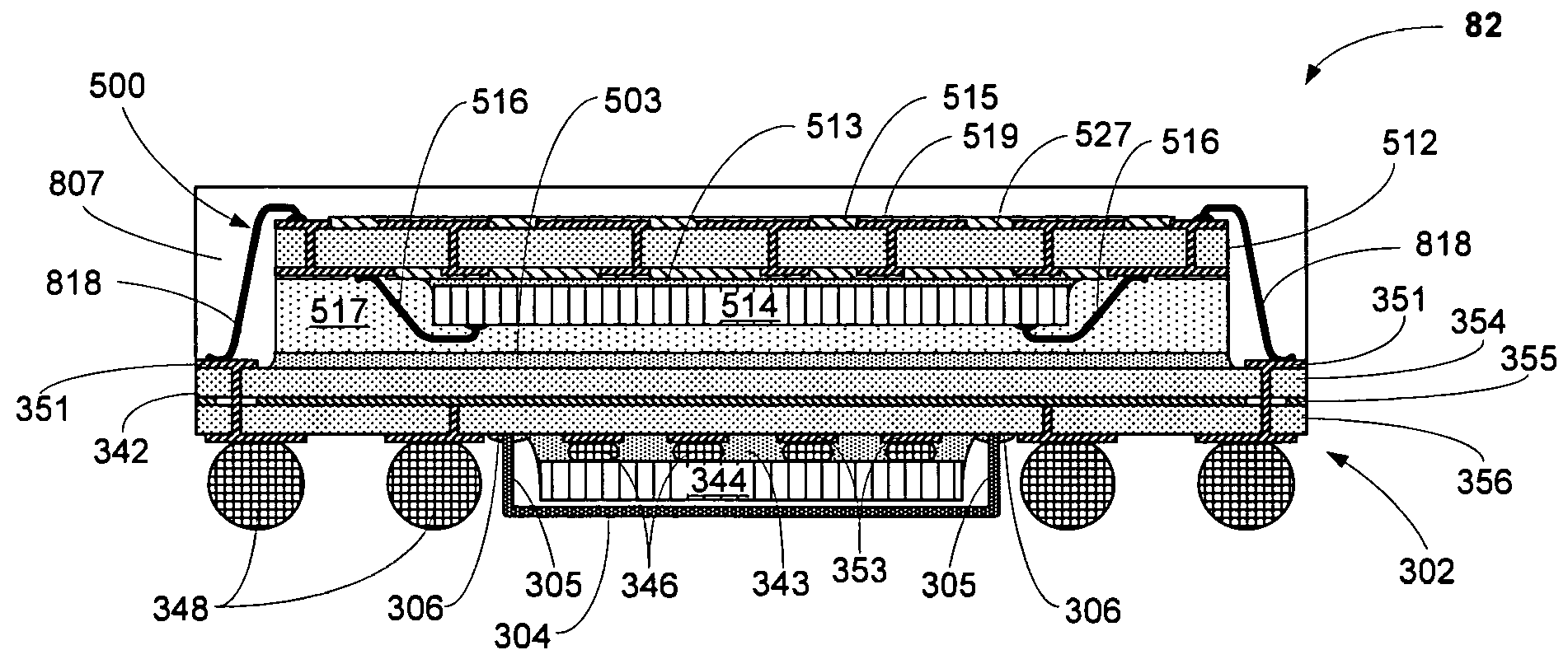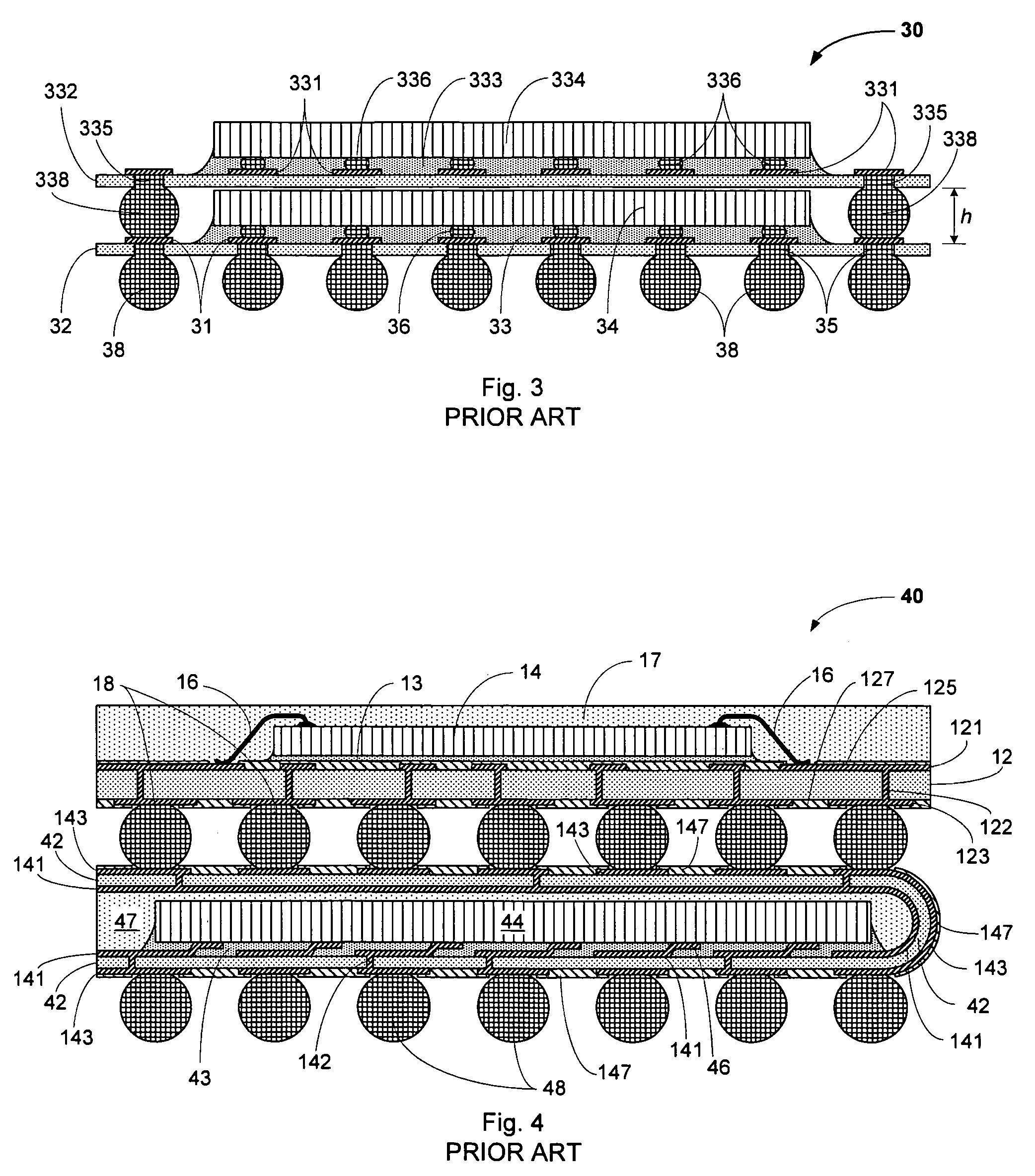Semiconductor multi-package module having inverted second package stacked over die-up flip-chip ball grid array (BGA) package
- Summary
- Abstract
- Description
- Claims
- Application Information
AI Technical Summary
Benefits of technology
Problems solved by technology
Method used
Image
Examples
Embodiment Construction
[0096]The invention will now be described in further detail by reference to the drawings, which illustrate alternative embodiments of the invention. The drawings are diagrammatic, showing features of the invention and their relation to other features and structures, and are not made to scale. For improved clarity of presentation, in the Figs. illustrating embodiments of the invention, elements corresponding to elements shown in other drawings are not all particularly relabeled, although they are all readily identifiable in all the Figs.
[0097]Turning now to FIG. 5A, there is shown in a diagrammatic sectional view generally at 50 an embodiment of a multi-package module, including stacked first (“bottom”) and second (“top”) packages, in which the top package is inverted, and the stacked packages are interconnected by wire bonding, according to an aspect of the invention. In the embodiment shown in FIG. 5A, the bottom package 400 is a conventional BGA package such as that shown in FIG. ...
PUM
 Login to View More
Login to View More Abstract
Description
Claims
Application Information
 Login to View More
Login to View More - R&D
- Intellectual Property
- Life Sciences
- Materials
- Tech Scout
- Unparalleled Data Quality
- Higher Quality Content
- 60% Fewer Hallucinations
Browse by: Latest US Patents, China's latest patents, Technical Efficacy Thesaurus, Application Domain, Technology Topic, Popular Technical Reports.
© 2025 PatSnap. All rights reserved.Legal|Privacy policy|Modern Slavery Act Transparency Statement|Sitemap|About US| Contact US: help@patsnap.com



